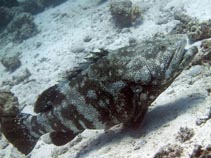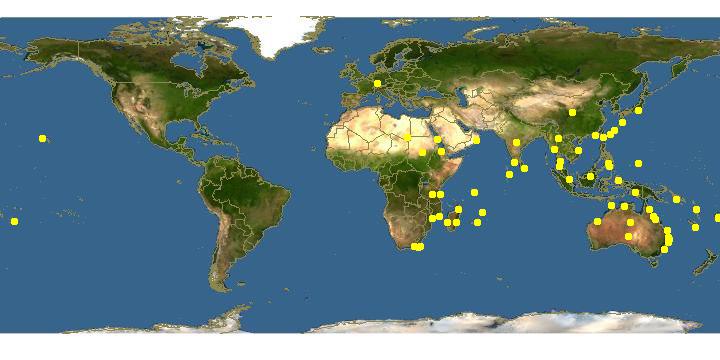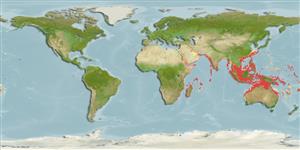http://www.fishbase.org/Summary/speciesSummary.php?genusname=Epinephelus&speciesname=malabaricus ---> http://52.67.158.155/Summary/speciesSummary.php?genusname=Epinephelus&speciesname=malabaricus
http://52.67.158.155/Summary/speciesSummary.php?genusname=Epinephelus&speciesname=malabaricus ---> https://fishbase.net.br/Summary/speciesSummary.php?genusname=Epinephelus&speciesname=malabaricus
https://fishbase.net.br/Summary/speciesSummary.php?genusname=Epinephelus&speciesname=malabaricus ---> https://fishbase.net.br/summary/Epinephelus-malabaricus.html
Epinephelus malabaricus, Malabar grouper : fisheries, aquaculture, gamefish

You can
sponsor
this page
Common name (e.g. trout)
Genus + Species (e.g. Gadus morhua)
-

-
About this page
-
Languages
-
User feedbacks
-
Citation
-
Uploads
-
Related species
-


 Malabar grouper
Add your observation in
Fish Watcher
Upload your
photos
and
videos
Malabar grouper
Add your observation in
Fish Watcher
Upload your
photos
and
videos
Pictures
|
Videos |
Google image
 Epinephelus malabaricus
Epinephelus malabaricus
Picture by
De Vroe, J.
Teleostei (teleosts) >
Perciformes/Serranoidei
(Groupers) >
Epinephelidae
(Groupers)
Etymology:
Epinephelus:
Greek, epinephelos = cloudy (Ref.
45335
)
.
More on authors:
Bloch
&
Schneider
.
Environment: milieu / climate zone / depth range / distribution range
Ecology
Marine; brackish; reef-associated; amphidromous (Ref.
51243
); depth range 0 - 150 m (Ref.
5222
). Tropical; 30°N - 32°S, 29°E - 173°W (Ref.
5222
)
Indo-Pacific: Red Sea and East Africa to Tonga, north to Japan, south to Australia. It is not known from the Persian Gulf, where the closely related
Epinephelus coioides
is common.
Length at first maturity / Size / Weight / Age
Maturity: L
m
64.0
range ? - ? cm
Max length : 234 cm TL male/unsexed; (Ref.
5213
); common length : 100.0 cm TL male/unsexed; (Ref.
5213
); max. published weight: 150.0 kg (Ref.
9710
)
Dorsal
spines
(total): 11;
Dorsal
soft rays
(total): 14-16;
Anal
spines
: 3;
Anal
soft rays
: 8. Characterized by light grey to yellowish brown color; five slightly oblique dark brown bars that bifurcate ventrally; numerous small black spots and blotches in head and body; ctenoid scales on body except cycloid anterodorsally on body, thorax and abdomen; body with auxiliary scales; greatest depth of body 3.0-3.6 in SL; rounded caudal fin; pelvic fins, 2.0-2.6 in head length (Ref.
90102
); head length 2.3-2.6 times in SL; snout length 1.7-2.0 times in upper jaw length; interorbital width 4.5-6.5 times in HL and 2.1-3.0 times in upper jaw length; flat or slightly convex interorbital area; subangular preopercle, with enlarged serrae at the angle; almost straight upper edge of operculum; subequal posterior and anterior nostrils, except in large adults which have the posterior nostrils slightly larger; maxilla reaches to or past vertical at rear edge of orbit, maxilla width 4.5-6.5% of SL; upper jaw length 17-22% of SL, 2-5 rows of teeth on midlateral part of lower jaw (Ref.
89707
).
A common species found in a variety of habitats: coral and rocky reefs, tide pools, estuaries, mangrove swamps and sandy or mud bottom from shore to depths of 150 m. Solitary (Ref 90102). Juveniles found near shore and in estuaries; sex reversal probable; catch statistics poor being previously confused with
E. andersoni
(Ref.
4332
). Feed primarily on fishes and crustaceans, and occasionally on cephalopods (Ref.
9710
). Present in Hong Kong live fish markets (Ref.
27253
). Widely used in mariculture mainly in the Far East (Ref.
43448
).
Heemstra, P.C. and J.E. Randall
, 1993. FAO Species Catalogue. Vol. 16. Groupers of the world (family Serranidae, subfamily Epinephelinae). An annotated and illustrated catalogue of the grouper, rockcod, hind, coral grouper and lyretail species known to date. Rome: FAO. FAO Fish. Synop. 125(16):382 p. (Ref.
5222
)
IUCN Red List Status (Ref.
130435
)
Least Concern (LC)
; Date assessed:
18 November 2016
CITES
Not Evaluated
Not Evaluated
Threat to humans
Harmless
Human uses
Fisheries: highly commercial; aquaculture: commercial; gamefish: yes
FAO - Aquaculture:
production
; ; Publication:
search
|
FishSource
|
Sea Around Us
More information
Countries
FAO areas
Ecosystems
Occurrences
Introductions
Stocks
Ecology
Diet
Food items
Food consumption
Ration
Common names
Synonyms
Metabolism
Predators
Ecotoxicology
Reproduction
Maturity
Spawning
Spawning aggregation
Fecundity
Eggs
Egg development
Age/Size
Growth
Length-weight
Length-length
Length-frequencies
Morphometrics
Morphology
Larvae
Larval dynamics
Recruitment
Abundance
BRUVS
References
Aquaculture
Aquaculture profile
Strains
Genetics
Electrophoreses
Heritability
Diseases
Processing
Nutrients
Mass conversion
Collaborators
Pictures
Stamps, Coins Misc.
Sounds
Ciguatera
Speed
Swim. type
Gill area
Otoliths
Brains
Vision
Tools
Bio-Quiz
|
E-book
|
Field guide
|
Identification keys
|
Length-frequency wizard
|
Life-history tool
|
Point map
|
Classification Tree
|
Catch-MSY
|
Special reports
Check for Aquarium maintenance
|
Check for Species Fact Sheets
|
Check for Aquaculture Fact Sheets
Download XML
Summary page
|
Point data
|
Common names
|
Photos
Internet sources
AFORO (otoliths)
|
Alien/Invasive Species database
|
Aquatic Commons
|
BHL
|
Cloffa
|
BOLDSystems
|
Websites from users
|
Check FishWatcher
|
CISTI
|
Catalog of Fishes
:
genus
,
species
|
DiscoverLife
|
ECOTOX
| FAO - Aquaculture:
production
; ; Publication:
search
|
Faunafri
| Fishipedia |
Fishtrace
| GenBank:
genome
,
nucleotide
|
GloBI
|
Google Books
|
Google Scholar
|
Google
|
IGFA World Record
|
MitoFish
|
National databases
|
Otolith Atlas of Taiwan Fishes
|
Public aquariums
|
PubMed
|
Reef Life Survey
|
Socotra Atlas
|
Tree of Life
| Wikipedia:
Go
,
Search
| World Records Freshwater Fishing |
Zoological Record
Estimates based on models
Preferred temperature (Ref.
123201
): 24.3 - 29.1, mean 28 °C (based on 2428 cells).
Phylogenetic diversity index (Ref.
82804
): PD
50
= 0.5000 [Uniqueness, from 0.5 = low to 2.0 = high].
Bayesian length-weight: a=0.01230 (0.00808 - 0.01874), b=3.05 (2.93 - 3.17), in cm total length, based on LWR estimates for this species & Genus-body shape (Ref.
93245
).
Trophic level (Ref.
69278
): 4.2 ±0.50 se; based on food items.
Generation time: 1.4 ( na - na) years. Estimated as median ln(3)/K based on 1
growth studies.
Resilience (Ref.
120179
): Low, minimum population doubling time 4.5 - 14 years (Fec = 51,087).
Fishing Vulnerability (Ref.
59153
): Moderate vulnerability (40 of 100).
Price category (Ref.
80766
):
Very high
.
Nutrients (Ref.
124155
): Calcium = 16.4 [6.8, 35.7] mg/100g; Iron = 0.497 [0.220, 1.121] mg/100g; Protein = 19.6 [17.9, 21.1] %; Omega3 = 0.129 [0.065, 0.254] g/100g; Selenium = 75.1 [32.6, 184.0] μg/100g; VitaminA = 33.9 [6.3, 185.3] μg/100g; Zinc = 0.838 [0.516, 1.355] mg/100g (wet weight);
Back to Search
Random Species
Back to Top
Accessed through:
Not available
FishBase mirror site :
Laguna, Philippines
Page last modified by :
mrius-barile
|






